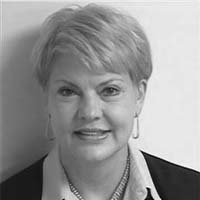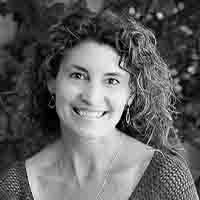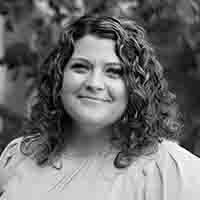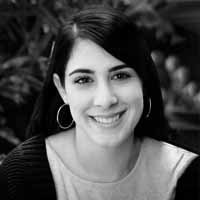From the Desk of Ann Kummer

After completing my master’s degree, I worked as a school-based speech-language pathologist (SLP) in the public schools of North Carolina for 3 years. I had a fairly diverse caseload and learned a great deal during that time. Therefore, I felt that I was well-prepared for my next job, which was working at Cincinnati Children's Hospital Medical Center. Gosh, was I wrong!
During my first day of work at Cincinnati Children’s, I realized that I had a lot more to learn to work in a medical setting! I found that I needed to know more about the evaluation and treatment of patients, from infants to young adults, with a variety of medical etiologies and conditions, including neurological conditions and craniofacial anomalies. I needed to be comfortable with providing services on an inpatient unit where patients are often trached and have very complex medical, as well as functional, disorders. Finally, I needed to be able to learn from many other medical professionals so that I could work effectively on interdisciplinary teams. I loved this job, which was both challenging and immensely rewarding. Therefore, I am excited about this 20Q article which provides more information about how to become successful as a medical speech pathologist.
First, here is some information about the authors of this course:
Kristie Spencer, PhD, CCC-SLP is a Professor, Associate Chair, and Graduate Program Coordinator for the Department of Speech and Hearing Sciences at the University of Washington in Seattle. She has published over 50 articles and has given over 100 presentations in the area of neurologic communication disorders. Her research focuses on understanding the speech and cognitive profiles of individuals with Parkinson and cerebellar disease, including investigation of rehabilitative approaches for the cognitive deficits experienced by people with Parkinson disease. Dr. Spencer is a member of the ANCDS National Writing Committee for Practice Guidelines in Dysarthria and has served as Editor for the American Journal of Speech-language Pathology--Motor Speech and Cognitive disorders section. Prior to coming to Seattle, she worked as a medical Speech-Language Pathologist at the VA Medical Center in Pittsburgh, PA.
Jacqueline Daniels, MA, CCC-SLP, CBIS is an Associate Teaching Professor and Clinical Educator in the Department of Speech and Hearing Sciences at the University of Washington. She worked as a medical Speech-Language Pathologist in acute care and inpatient rehabilitation prior to joining the faculty at the University of Washington. Her clinical areas of interest include medically complex patients with dysphagia, tracheostomy, and cognitive-communication deficits, specifically traumatic brain injury, where she holds the Certified Brain Injury Specialist certificate. As part of the faculty, she teaches graduate courses in Medical Speech-Language Pathology, Interprofessional Education, and Traumatic Brain Injury. Clinically, she supervises students during their adult neurologic-focused assessment and treatment rotations.
Tamar Nir, MA, CCC-SLP is a doctoral student working with Dr. Kristie Spencer in the Speech and Hearing Sciences Department at the University of Washington. She has worked with clients in both acute and inpatient settings with a specialty in neurological and traumatic injury rehabilitation and AAC. Her research interests include motor speech disorders, cognitive-communication disorders, traumatic brain injury, and the use of external technological aids for communication and cognitive support in people with neurodegenerative disease.
In this course, the authors provide an introduction to the career of a medical speech-language pathologist. They discuss the wide range of possible employment settings for medical SLPs and the types of disorders that the medical SLP may treat. Finally, the authors provide recommendations for foundational coursework and preparatory training for the beginner, as well as advanced certifications and clinical specializations for current practicing SLPs.
Now…read on, learn, and enjoy!
Ann W. Kummer, PhD, CCC-SLP, FASHA, 2017 ASHA Honors
Contributing Editor
Browse the complete collection of 20Q with Ann Kummer CEU articles at www.speechpathology.com/20Q
20Q: Becoming a Medical SLP: From NICUs to SNFs and Everything in Between
Learning Outcomes
After this course, readers will be able to:
- Identify the preparatory knowledge and skills needed for a transition to Medical Speech-Language Pathologist (SLP).
- Describe the variety of settings and clinical populations that fall under the purview of a Medical SLP.
- Discuss common procedures and contributions of a Medical SLP to the patient's continuum of care.
1. What is a Medical SLP?
Medical SLPs are professionals who practice in medical and healthcare settings as members of an interprofessional team. They provide diagnostic and treatment services for individuals with speech, voice, language, cognitive, and swallowing impairments.
2. What foundational knowledge is most helpful for a Medical SLP to have?
Through graduate coursework or continuing education, the following tailored content areas would provide reasonable background knowledge for someone interested in pursuing Medical SLP:
- Anatomy and physiology of speech and swallowing function; this serves as the basis for conducting and interpreting both clinical and instrumental exams.
- An understanding of typical versus atypical swallowing patterns, as well as the expected presentation of dysphagia in common clinical populations (e.g., stroke, Parkinson’s disease, ALS) or from common pathophysiologies (e.g., weakness, reduced range of motion, incoordination, involuntary movements).
- An understanding of cognitive and language domains, and how disruption to these complex processes can manifest across the spectrum of severity.
- Basic neuroanatomy and understanding of brain-behavior relationships (e.g, a lesion to Broca’s area would likely lead to aphasia; disruption to the cerebellum would likely lead to challenges with motor control, etc.).
- Counseling skills and ability to provide patient/family/interdisciplinary education
- Basic understanding of body systems, such as cardiovascular and respiratory
- Understanding of Augmentative and Alternative Communication (AAC) options, particularly with an eye to the changing needs of individuals with neurodegenerative diseases
- Basic understanding of tracheostomies, ventilator dependence, speaking valves, and voice restoration options for laryngectomy
3. What are some typical work settings for Medical SLPs?
Medical SLPs may practice in a wide array of community settings (refer to asha.org/slp/healthcare for detailed setting specific information). Examples of work settings include the following:
- Acute care hospitals (some have a focus on traumatic injuries). Within these settings, you may serve patients who are at different stages of recovery:
- Intensive Care Unit (ICU) for patients needing critical care
- Progressive Care Unit (PCU, also known as step-down unit, transitional care unit) for patients who need an intermediate step between the ICU and the medical/surgical floor)
- Long-term Acute Care (LTAC) for patients with serious medical conditions that require ongoing care, but not at the ICU level
- Pediatric Hospitals
- Transitional/Rehabilitation facilities
- Inpatient rehabilitation units (for short term stays)
- Post-acute rehabilitation (longer-term stay, typically >3 months)
- Skilled Nursing Facilities (for individuals who need the services of a nursing staff) and Assisted Living Facilities (for individuals who need basic assistance with Activities of Daily Living
- Outpatient Clinics, which can be specialized (e.g., patients with neurologic impairment)
- Specialty care hospitals (e.g., Head and neck cancer; Spinal cord injury; Veteran’s Affairs Medical Centers) and treatment centers (e.g., Parkinson’s Disease Care Center)
- Home Health Agencies
4. Do SLPs ever work in a Neonatal Intensive Care Unit?
Yes, though it’s a relatively new aspect of our field. All premature infants are at risk for swallowing issues. A Medical SLP in this advanced practice setting can provide a swallowing assessment and feeding support to help the newborn develop during this early, critical phase. For example, non-nutritive sucking and swallowing exercises can enhance the oral feeding readiness of pre-term infants and significantly decrease the number of infants discharged with feeding tubes (Ostadi et al., 2021). In some NICUs, an SLP is asked to evaluate every pre-term infant for possible feeding difficulties. SLPs in this setting would be collaborating frequently with other disciplines, such as Occupational Therapy (for positioning) and lactation specialists.
5. What clinical populations may be encountered by a Medical SLP?
Given the wide variety of settings, the clinical populations encountered by a Medical SLP are remarkably diverse. Kanadet, Izaguirre and colleagues (2020) provide a chapter summarizing the clinical populations encountered by a Medical SLP and the specific roles that SLPs might play (with case examples). In general, SLPs are often asked to address dysphagia, cognitive-communication impairment, aphasia, apraxia, dysarthria, voice disorders, and so forth from a wide range of etiologies, such as:
- Acquired brain injury (ABI), e.g., from stroke or cancer
- Traumatic brain injury (TBI) e.g., from motor vehicle accident, fall, veteran combat, gunshot wound, encephalitis
- Spinal cord injuries or surgeries (e.g., Anterior Cervical Discectomy & Fusion)
- Neurodegenerative diseases, such as Alzheimer’s Disease, Parkinson’s Disease, Multiple Sclerosis, Amyotrophic Lateral Sclerosis, Huntington’s Disease, Guillain-Barré Syndrome, Dementia with Lewy Bodies, and Myasthenia Gravis
- Cancers, including esophageal, laryngeal, oral, and spinal, as well as post-cancer cognitive disorder (often referred to as “chemobrain”)
- Head and neck surgeries, such as lip, tongue, and oropharynx
- Esophageal disorders, such as gastroesophageal reflux disease and esophageal motility disorders
- Cardiac and respiratory disorders, such as patients using ECMO machines (replaces the function of the heart and lungs), or who had a Coronary Artery Bypass Graft (CABG)
- Lung transplants
- Patients requiring a ventilator or tracheostomy
- Neurogenic voice disorders
- Psychiatric disorders, such as Delirium, Functional Neurologic Disorder or Schizophrenia
- Epilepsy/neurosurgery
6. Are there particular clinical populations that would be encountered by a Pediatric Medical SLP?
Pediatric Medical SLPs will also serve patients from some of the clinical populations outlined above (e.g., traumatic brain injury, pediatric stroke, head and neck surgery, epilepsy) and may also encounter unique populations, for example, developmental disorders (such as Muscular Dystrophy and Cerebral Palsy), Posterior Fossa Syndrome, craniofacial abnormalities, and genetic syndromes (e.g., Pierre Robin Syndrome). Because pediatric hospitals include the evaluation and management of patients from birth to 18 years of age, SLPs may require specialized skills for a particular age group (e.g., toddlers, adolescents, etc.).
7. What interprofessional collaborations are typical for a Medical SLP?
Medical SLPs often coordinate care and decision-making with a wide array of colleagues, such as physicians, registered nurses, case workers / social workers, registered dieticians, physical therapists, occupational therapists, certified nursing assistants, and patient care technicians. Depending on the setting, Medical SLPs may be interacting frequently with radiologist and radiology technicians for swallow studies; healthcare surrogates or interpreters that help to facilitate patient care; palliative care or hospice staff; other medical specialties (e.g., gastrointestinal, neurology, psychology, etc.); other rehabilitation specialties (e.g., recreation therapy, music therapy, animal therapy); and/or school SLPs, teachers and child life specialists.
8. Do Medical SLPs have to advocate for their roles and responsibilities in healthcare settings?
The scope of practice of a Medical SLP is far more extensive than most community members and healthcare workers realize. Beyond the traditional focus on speech and language function, Medical SLPs extend their reach to areas such as dysphagia, tracheostomy and ventilator dependence, right hemisphere cognitive-communication impairment, cognitive challenges with the dementias, and so forth. As such, Medical SLPs often need to educate patients, family members, doctors/nurses, and allied health professionals on their roles, responsibilities, and possible contributions. Often this is the first time a patient or family has heard of a communication disorder, and the SLP’s responsibility is to provide broader contextual education in addition to information about the specific diagnosis, expectations for recovery, management options, etc. Medical SLPs will also routinely face the need to advocate for their role in healthcare settings, such as the need to convince medical professionals that there are evidence-based cognitive-linguistic supports to help people with dementia even in the face of a progressive disease (Tristani, 2016).
9. Do Medical SLPs make life-or-death decisions for their patients?
In some settings, Medical SLPs work with patients who are medically fragile. While life-or-death decisions are most often made by the physicians, Medical SLPs offer important and impactful treatment recommendations for these patients. For instance, the Medical SLP might contribute to nutritional status and feeding decisions in light of swallowing issues. They might determine the patient’s level of cognitive functioning and ability to understand weighty medical decisions. They might contribute to the communication and swallowing assessment and management of patients with tracheostomies, both with and without ventilator dependence, in cooperation with an interprofessional team. At times, the Medical SLP may be writing management goals that support palliative end-of-life care (Pollens, 2012) as described in the next question.
10. Might medical SLPs be involved in end-of-life care?
Yes, it is possible that a Medical SLP might experience end-of-life care across healthcare settings, but particularly when the SLPs are involved with palliative care and hospice. The SLP can contribute to complex clinical and ethical decisions regarding eating and communication. For example, decisions often need to be made about offering pleasure/comfort feedings instead of non-oral means of nutrition, weighing with the patient and family the risks and benefits. SLPs may also contribute to decisions about discharge to memory care units or skilled nursing facilities versus home, while factoring in the patient’s cognitive-communication functioning and level of caregiver support. As always, social and cultural influences on end-of-life decisions are very important and at the forefront of decision-making. Additional information about this meaningful role of a Medical SLP can be found on the following ASHA (Link: www.asha.org/slp/clinical/endoflife/).
11. How do Medical SLPs stay safe with COVID-19 and highly contagious patients?
Interaction with patients with COVID-19 is common in many healthcare settings. According to recent studies, Medical SLPs most often treat dysphonia, dysphagia, dysarthria, and cognitive-communication disorders in patients with COVID-19 (Chad et al., 2021; Ramage, 2020) though this situation is unfolding in real time as scientists and clinicians learn more about new variants and long-haul syndrome from COVID-19 (Phillips & Williams, 2021; Larsen et al., 2021; see also ASHA Leader webpage). Medical SLPs may also be called upon to provide ventilator, ECMO or speaking valve support.
Personal Protective Equipment (PPE) is typically provided by the facility, and may include gowns, gloves, face or eye shields, respirator masks (e.g., N95s) and isolation protocols. Training on donning and doffing PPE is provided to keep medical staff as safe as possible. Additional precautions include: avoiding travelling patients (e.g., no walking in hallways; exams conducted in their rooms or rooms with HEPA filters), patients remaining masked when possible, etc. Infection control precautions apply to all highly contagious patients (e.g., those with MRSA, tuberculosis, influenza, etc.). See ASHA’s policy document for more information about standard and isolation precautions.
12. Can you give an example of a typical day for a Medical SLP in a hospital?
A Medical SLP may start their shift by logging into the Electronic Medical Record (EMR) and dividing new consults and follow-up treatments among the SLP team, often seeing 6-15 patients per day. They would likely prioritize evaluations or swallowing studies, and then turn to treatments for their patients recovering from issues such as stroke, infection, trauma, and organ failure. Prior to seeing a patient, a chart review would be conducted, and the Medical SLP may call nursing staff or physicians for clearance or clarification, if needed. The evaluation/treatment session is conducted, which may occur bedside, in a communal room, in a radiology suite (e.g., for a Modified Barium Swallow Study), etc. Often, the Medical SLP has to be flexible with their schedule as patients may develop new medical issues or become lethargic or unresponsive. Patients may also have new appointments that supersede their rehabilitation appointments. The Medical SLP may also co-treat with another discipline, such as physical or occupational therapy. The remainder of the day would often be spent on finalizing progress notes and other documentation.
13. Can you give an example of a typical day in a skilled nursing facility (SNF)?
The Medical SLP may start the day by reviewing the clinic schedule and looking up resident information in the EMR. After seeing a few residents for issues related to dysphagia, dysarthria, and cognitive decline, the SLP may attend the Nursing Rounds, where notable changes to the residents are discussed. The SLP might then join several residents during lunch to observe their swallowing ability and dysphagia strategy use. After working with several clients with memory impairment, using Spaced Retrieval and memory books, the SLP may attend a family conference with the SNF team. Following a few more evaluation/management sessions with residents, the SLP turns to documentation, writing progress notes, and emailing colleagues.
14. How do medical SLPs contribute to team decisions about discharge and continuum of care?
Medical SLPs contribute valuable information related to the patient’s cognition (including orientation, awareness of deficits, executive functions, memory, etc.) speech, language, and swallowing, gleaning relevant information from the evaluation and management process to share with the discharge team. Based on their experiences with the patient, the SLP can offer pros and cons about discharge to a skilled nursing facility versus a rehabilitation center, outpatient service, or home health agency. They may also serve as an advocate for patient needs, for example, by ensuring that the patient qualifies for inpatient rehabilitation or to receive the adequate medical equipment they might need (e.g., speaking valve, AAC, etc.) upon discharge.
15. What specialty certifications and training can you consider as a Medical SLP?
There are numerous opportunities for Medical SLPs to seek specialized training or certification depending on their area of clinical interest. For example:
- Flexible Endoscopic Evaluation of Swallowing
- Certified Brain Injury Specialist
- Board certification with the Academy of Neurologic Communication Disorders and Sciences
- Lee Silverman Voice Treatment certification
- SpeakOut! And Loud Crowd training
- Board-certified lactation specialist
- Board certification in swallowing through ASHA
16. What are some clinical specialty areas in Medical SLP?
With experience and targeted training, Medical SLPs may also develop expertise in specialty areas, such as:
- Laryngectomy voice restoration options, such as tracheoesophageal punctures (TEPs) and electrolarynges
- Burn care
- Spinal cord injury
- Psychiatric disorders
- Tracheostomy and ventilator dependence
- Cancer/tumor care
17. Can you give an example of how assistive technology is used in the medical setting?
Patients who are unable to communicate are at greater risk of receiving poorer treatment, becoming isolated, and experiencing decreased quality of life (Broomfield, Harrop et al., 2019; Handberg & Voss, 2018). Thus, there is a critical need to offer AAC options in medical settings, across the span of low-tech and high-tech options. For example, individuals with ALS who have severely impaired motor control but preserved eye movement may use eye gaze technology, which activates a switch and sends the message to a speech-generating device. Individuals with severe apraxia of speech and/or dysarthria may use high-tech AAC devices to support speech, while individuals with aphasia may use AAC to support challenges with language. Conversely, low-tech options, such as communication books/boards or whiteboards, may facilitate patient-provider communication for children and adults with tracheostomy or head-and-neck cancer.
18. How knowledgeable do Medical SLPs need to be about medications?
General knowledge of common medications is important, particularly a heightened awareness of how they might impact cognition, alertness, behavior, etc. For example, medications such as stimulants may help to improve attention or alertness in therapy sessions. Conversely, other medications, such as those used to control seizures, may contribute to cognitive challenges, with patients reporting “brain fog” or difficulty staying awake. Additionally, medication awareness will also facilitate collaborations with the pharmacist and will potentially help the Medical SLP identify possible interactions from polypharmacy (see Carl and Johnson, 2006; Hill, Sunjic, Brandimore, and Gupta, 2020).
19. I’m considering a switch to Medical SLP. What should I do to prepare?
If possible, seek out a mentor that is currently working in a healthcare setting and able to answer your specific questions about the Medical SLP field. Other possibilities include joining ASHA’s Special Interest Groups 2 (Neurogenic Communication Disorders), 13 (Swallowing and Swallowing Disorders) and 15 (Gerontology); attending conferences/presentations related to your areas of interest (e.g., the International Cognitive-Communication Disorders conference, the Academy of Neurologic Communication Disorders conference, the annual meeting of the Dysphagia Research Society, etc.); reading reference books (e.g., Johnson and Johnson, 2016; Spencer and Daniels, 2020); completing CEUs on relevant topics, such as dysphagia, tracheostomy and ventilator dependence, aphasia, traumatic brain injury, or dementia; searching for online-focused training videos; and seeking out volunteer or shadowing opportunities in a medical setting.
20. What does the future hold for Medical SLPs?
Job prospects look bright for the Medical SLP. The Bureau of Labor Statistics (BLS) predicts that 28,900 jobs will open up before 2024. Since speech and language impairments increase with age, the BLS predicts that the aging baby boomer generation will spur this job growth. The BLS also cites the increased awareness of speech and language disorders in children as another reason for this job boom. ASHA also notes these market trends, and highlights the growing need for medical SLPs given the aging population, increased survival rates from trauma and stroke, and the increased use of contract services by hospital and nursing care facilities.
References
ASHA’s Healthcare Services Team. Healthcare. https://www.asha.org/slp/healthcare (accessed November 10, 2021).
ASHA: End of Life Issues in Speech-Language Pathology. https://www.asha.org/slp/clinical/endoflife/ (accessed November 12, 2021).
ASHA: Infection Control Resources for Audiologists and Speech-Language Pathologists. https://www.asha.org/practice/infection-control/ (accessed November 12, 2021).
ASHA: Market Trends. https://www.asha.org/careers/market-trends/
Broomfield, K., Harrop, D., Judge, S., Jones, G., & Sage, K. (2019). Appraising the quality of tools used to record patient-reported outcomes in users of augmentative and alternative communication (AAC): A systematic review. Quality of Life Research, 28; 2669-2683.
Bureau of Labor Statistics, U.S. Department of Labor, Occupational Outlook Handbook, Speech-Language Pathologists, at https://www.bls.gov/ooh/healthcare/speech-language-pathologists.htm (accessed November 12, 2021).
Carl, L., & Johnson, P. (2006). Drugs and Dysphagia: How medications can affect eating and swallowing. Pro-Ed.
Chad, K., Moyse K., & Enderby, P. (2021). Impact of COVID-19 on the Speech and Language Therapy Profession and Their Patients. Frontiers in Neurology, 12, 96.
Copeland, J. (2021). Considering COVID-19 in assessing and treating dysphagia patients. https://leader.pubs.asha.org/do/10.1044/2021-0414-covid-dysphagia-considerations/full/.
Handberg, C., & Voss, A. K. (2018). Implementing augmentative and alternative communication in critical care settings: Perspectives of healthcare professionals. Journal of Clinical Nursing, 27(1-2):102-114.
Hill, A. M., Sunjuc, K. M., Brandimore, A. E., & Gupta, S. V. (2020). Clinical considerations of medication use in patients with swallowing and communication disorders. In K.A. Spencer and J. Daniels (Eds.) Medical setting considerations for the speech-language pathologist. San Diego: Plural Publishing, Inc.
Johnson, A. F., & Johnson, B. H. (2016). Medical speech-language pathology: A practitioner’s guide (3rd edition). New York: Thieme Medical Publishers.
Kanadet, R. R., Izaguirre, D. K., Balou, M., & Spencer, K. A. (2020). Clinical populations encountered by the medical speech-language pathologist. In K.A. Spencer and J. Daniels (Eds.) Medical setting considerations of the speech-language pathologist. San Diego: Plural Publishing, Inc.
Larsen, N., Stiles, L., & Miglis, M. (2021). Preparing for the long-haul: Autonomic complications of COVID-19. Autonomic Neuroscience: Basic & Clinical, 235: 102841.
Ostadi, M., Jokar, F., Armanian, A.M., Namnabati, M., Kazemi, Y., & Poorjavad, M. (2021). The effects of swallowing exercise and non-nutritive sucking exercise on oral feeding readiness in preterm infants: A randomized controlled trial. International Journal of Pediatric Otorhinolaryngology, 142: 110602.
Phillips, S., & Williams, M.A. (2021). Confronting our next national disaster- Long-haul covid. New England Journal of Medicine, 385(7), 577-579.
Pollens, R. D. (2012). Integrating speech-language pathology services in palliative end-of-life care. Topics in Language Disorders, 32(2), 137-148.
Ramage, A. E. (2020). Potential for cognitive-communication impairment in COVID-19 survivors: A call to action for speech-language pathologists. American Journal of Speech-Language Pathology, 12;29(4):1821-1832.
Spencer, K. A., & Daniels, J. (2020). Medical setting considerations for the speech-language pathologist. San Diego: Plural Publishing Inc.
Tristani, M. (2016). Bridging the gap: SLP approaches for persons with early-stage dementia. Perspectives of the ASHA Special Interest Groups, 1(1), 4-11.
Citation
Spencer, K. A., Daniels, J., & Nir, T. (2021). 20Q: Becoming a medical SLP: From NICUs to SNFs and everything in between. SpeechPathology.com. Article 20494. Available at www.speechpathology.com



